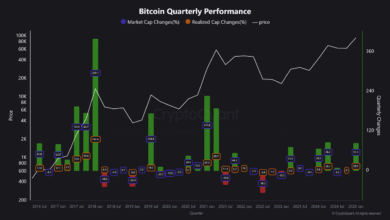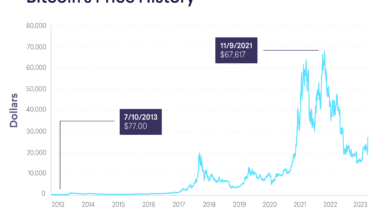Ripple Stablecoin: Achieving a National Banking License

Ripple stablecoin is paving the way for a new era in the cryptocurrency market by seeking enhanced regulatory oversight and compliance. With a keen focus on obtaining a federal banking license, Ripple aims to elevate its digital asset, Ripple USD (RLUSD), into a framework governed by both state and federal regulations. This dual licensing strategy not only enhances trust among users but also establishes a compliance standard that could set the benchmark for other stablecoins in the industry. Currently supervised by the New York Department of Financial Services, Ripple’s ambitions signal a shift toward greater institutional acceptance of stablecoin regulations in the crypto ecosystem. As Ripple moves forward, its commitment to navigating the complexities of federal oversight highlights its strategic vision for stability and innovation in the evolving financial landscape.
The Ripple USD offers an innovative solution in the realm of digital currencies, setting it apart from traditional financial sectors. By pursuing a national banking charter and working concurrently with the U.S. Office of the Comptroller of the Currency, Ripple is not just innovating but also redefining what it means to be a compliant asset in today’s market. This initiative reflects the rising importance of regulatory frameworks as cryptocurrencies increasingly integrate with established banking practices. As Ripple undertakes this monumental endeavor, the push for a federal banking license exemplifies a broader movement among cryptocurrencies towards gaining acceptance in regulated environments. Furthermore, this highlights the necessity for clear stablecoin regulations to ensure a future where blockchain technology and traditional finance can coexist seamlessly.
The Importance of Ripple USD in the Stablecoin Market
Ripple USD (RLUSD) has emerged as a key player in the stablecoin market, offering a unique blend of compliance and innovation that sets it apart from other digital currencies. With a current market cap of $469 million, RLUSD is pegged to the U.S. dollar, backed by dollar reserves and government bonds, making it a stable and trustworthy option for users looking to mitigate volatility. Its launch in late 2024 attracted attention not only because of its stability but also due to Ripple’s commitment to regulatory oversight, a factor that many investors prioritize when choosing a stablecoin.
As Ripple seeks to enhance the legitimacy and security of RLUSD through its applications for both a national banking license and a Federal Reserve master account, the stablecoin positions itself at the forefront of a regulatory transformation in the cryptocurrency space. This proactive approach to regulatory compliance is essential as more governments around the world begin to develop definitions and regulations for stablecoins. By aiming for rigorous compliance measures, Ripple is setting a standard that could inspire other stablecoin issuers to follow suit, thereby fostering trust among users and institutions alike.
Ripple’s Pursuit of Federal Banking License: A Game Changer
Ripple’s recent application for a national banking license with the U.S. Office of the Comptroller of the Currency (OCC) marks a significant milestone in its journey towards achieving federal oversight for its stablecoin, Ripple USD. By obtaining this license, Ripple aims to enhance its operational framework, ensuring compliance with both state and federal regulations. This dual licensing strategy is not only innovative but also reinforces Ripple’s commitment to establishing a transparent and secure environment for stablecoin transactions.
With the anticipated introduction of the GENIUS Act, which could make federal licensing a requirement for all stablecoin issuers, Ripple’s strategic move is timely. It positions the company as a leader in compliance, potentially paving the way for a future where stablecoin regulations are more clearly defined by authorities. As companies like Circle also pursue federal licenses, Ripple’s application could catalyze a broader movement within the cryptocurrency sector towards embracing regulatory frameworks that foster institutional trust.
Adapting to Stablecoin Regulations: Ripple’s Unique Initiative
As regulatory scrutiny on cryptocurrencies increases, Ripple is taking initiative through its dual licensing strategy to adapt to stablecoin regulations effectively. CEO Brad Garlinghouse’s statement underscores the company’s vision to set a compliance standard in a quickly evolving market. The prospect of adhering to both state and federal requirements will not only bolster investor confidence but also establish a framework that enhances the credibility of RLUSD as a viable payment alternative.
In a landscape where stablecoins are under intense examination from regulators worldwide, Ripple’s efforts reflect a growing realization that clear compliance paths are essential for industry sustainability. By aligning itself with regulatory expectations, Ripple provides a blueprint that can help guide other cryptocurrency firms in navigating the complexities of compliance, potentially leading to more robust regulations that benefit the entire ecosystem.
The Role of Ripple Compliance in Enhancing Investor Trust
Investor trust is paramount in the cryptocurrency market, and Ripple’s compliance efforts play a crucial role in strengthening that trust for its stablecoin, Ripple USD. By pursuing a national bank charter and a Federal Reserve master account, Ripple is positioning RLUSD not just as a digital dollar alternative but as a credible financial instrument subject to rigorous oversight. This commitment to compliance provides nervous investors with assurance that RLUSD operates within a well-established regulatory framework.
Furthermore, as the cryptocurrency landscape faces uncertainty with potential regulatory shifts, Ripple’s dedication to transparency and regulation can serve to set a precedent for other burgeoning crypto entities. By focusing on compliance, Ripple not only protects its own interests but also contributes to the overall maturation of the stablecoin market, nurturing conditions where digital currencies can coexist with traditional financial systems.
Exploring Ripple’s Enhanced Regulatory Engagement Strategy
Ripple’s regulatory engagement strategy has broadened with its recent applications for vital banking licenses, establishing a proactive stance towards stablecoin regulations. By applying for a national banking charter and engaging with the Federal Reserve, Ripple aims to navigate and shape the regulatory landscape rather than react to it. This forward-thinking approach is vital in an industry that often grapples with ambiguous guidelines and shifting regulatory priorities.
In doing so, Ripple is not only aligning itself with best practices but is also setting an example for other blockchain firms. The company’s dual licensing strategy illustrates an evolving understanding of the necessity for financial compliance in achieving greater acceptance among traditional financial institutions. Ripple’s adaptability and strategic foresight could position it as a leader in fostering a more structured and secure environment for stablecoins.
Ripple’s Checkpoints in the Road to Federal Oversight
The path to federal oversight for stablecoins, particularly Ripple USD, involves several significant checkpoints, each designed to enhance regulatory adherence and operational integrity. Ripple’s decision to apply for national licensing is more than a legal move; it represents a critical step toward mainstream acceptance and integration within the U.S. financial ecosystem. These checkpoints, including compliance updates, audits, and ongoing interactions with regulatory bodies, will be imperative as Ripple moves forward.
Achieving federal oversight would mean that Ripple USD must maintain strict compliance standards that satisfy both federal and state regulations. This approach emphasizes Ripple’s commitment to not only meet but exceed regulatory expectations, which could ultimately lead to established frameworks that govern stablecoin operations, ensuring a safer environment for users and investors alike.
Ripple and Standard Custody’s Collaboration with Federal Reserve
The collaboration between Ripple and its subsidiary Standard Custody & Trust Company to apply for a Federal Reserve master account is a strategic maneuver aimed at enhancing the operational capabilities of Ripple USD. By securing access to the Federal Reserve, Ripple would be empowered to manage its stablecoin reserves directly with the central bank, significantly increasing operational efficiency and security, which is vital in an increasingly competitive stablecoin market.
This direct relationship with the Federal Reserve could establish a level of confidence among users, reinforcing trust in Ripple USD as a reliable stablecoin option. Additionally, it enables Ripple to operate outside conventional banking hours, providing flexible transactions for users and attracting institutional investors who favor increased access and liquidity.
The Future of Ripple USD Under Regulatory Oversight
The future of Ripple USD under increased regulatory oversight is promising, as the push for greater compliance reflects a maturation in the cryptocurrency market. As Ripple continues to navigate the complex regulatory environment, the company’s proactive stance will likely set the tone for how other stablecoin issuers approach compliance. By establishing a robust regulatory foundation, Ripple not only paves the way for RLUSD but also enhances the entire stablecoin ecosystem.
With proposed regulations like the GENIUS Act on the horizon, which may standardize stablecoin requirements, Ripple’s efforts could serve as a model for other firms. If more issuers adopt similar compliance frameworks, the results could lead to a well-regulated stablecoin market, encouraging broader adoption while safeguarding users and investors against potential risks associated with unregulated digital currencies.
Choosing Ripple: Why Compliance Matters for Investors
For investors evaluating their options in the stablecoin market, Ripple’s emphasis on compliance and regulatory adherence is a compelling factor. As cryptocurrency regulations become more defined, the importance of selecting a stablecoin provider that prioritizes compliance cannot be overstated. Ripple USD stands out not only for its stability but also for the rigorous processes it employs to ensure adherence to both state and federal regulations, which offers additional peace of mind for investors.
Furthermore, Ripple’s commitment to compliance is indicative of its long-term strategy within the banking sector, signaling to investors that RLUSD is designed to be a secure and reliable digital currency. This focus on regulatory standards creates a competitive advantage in a marketplace where trust and transparency are paramount, ensuring that investors can participate in the stablecoin economy with confidence.
Frequently Asked Questions
What is Ripple USD and how does it relate to stablecoin regulations?
Ripple USD (RLUSD) is a stablecoin issued by Ripple that is designed to maintain a stable value, supported by dollar reserves and government bonds. It is subject to both state and federal regulations, particularly as Ripple seeks to expand the regulatory oversight to include federal jurisdiction, enhancing compliance standards in the stablecoin market.
How is Ripple’s dual licensing strategy beneficial for its stablecoin?
Ripple’s dual licensing strategy, which involves applying for a national banking license while maintaining state oversight from the NYDFS, establishes a comprehensive compliance framework for its stablecoin, Ripple USD. This approach promotes greater trust and transparency, positioning Ripple as a leader in regulatory compliance within the stablecoin sector.
What steps is Ripple taking to secure federal banking license for its stablecoin?
Ripple has applied for a national banking license with the U.S. Office of the Comptroller of the Currency (OCC) to achieve dual licensing for its stablecoin, Ripple USD. This step aims to enhance compliance and regulatory oversight, allowing Ripple to operate under federal jurisdiction.
Why is Ripple seeking access to a Federal Reserve master account for Ripple USD?
Ripple aims to obtain a Federal Reserve master account for its stablecoin, Ripple USD, to manage its reserves directly with the central bank. This access would allow Ripple to enhance security and trust in RLUSD, enabling them to issue and redeem tokens efficiently.
How does Ripple’s application for federal oversight influence the stablecoin market?
Ripple’s application for federal oversight sets a new standard for the stablecoin market by promoting compliance and transparency. By pursuing a national banking license and a Federal Reserve account, Ripple could influence regulatory frameworks that other stablecoin issuers will need to follow, particularly with the impending GENIUS Act.
What is the significance of Ripple’s stablecoin initiative in the context of regulatory trends?
Ripple’s stablecoin initiative, especially its dual licensing strategy and compliance with both state and federal regulations, reflects a broader trend toward enhanced regulatory acceptance of stablecoins. This positions Ripple USD as a potentially influential player as regulations evolve in the cryptocurrency landscape.
What challenges does Ripple face in obtaining federal banking licenses for Ripple USD?
Ripple’s pursuit of federal banking licenses for its stablecoin, Ripple USD, may encounter challenges such as navigating complex regulatory requirements, competing with other crypto firms, and aligning with future legislation like the GENIUS Act, which is set to impact stablecoin issuers significantly.
How does Ripple ensure compliance in the issuance of Ripple USD?
Ripple ensures compliance in the issuance of its stablecoin, Ripple USD, by adhering to the regulatory standards set by the New York Department of Financial Services and seeking additional federal oversight. This dual compliance strategy solidifies its commitment to transparency and aligns its operations with emerging regulatory frameworks.
| Key Point | Details |
|---|---|
| Ripple’s National Banking License Application | Applied for a national banking license with U.S. OCC to expand regulatory oversight. |
| Regulatory Oversight | Currently supervised by NYDFS; seeking federal oversight. |
| Market Position | Market cap of RLUSD is $469 million, supported by dollar reserves. |
| CEO’s Commitment | Brad Garlinghouse emphasizes dedication to compliance and trust standards. |
| Dual Regulatory Benefits | Seeking state and federal oversight sets a new transparency standard. |
| Upcoming GENIUS Act | Anticipating regulatory framework requiring licenses for stablecoin issuers. |
| Fed Master Account Application | Standard Custody & Trust Company applied for a Federal Reserve master account. |
| Access Benefits | Direct management of RLUSD reserves with the Fed enhances security. |
Summary
Ripple stablecoin is poised to make significant advancements in the regulated banking sector as it seeks both a national banking license and a Federal Reserve master account. By applying for federal oversight, Ripple not only aims to establish a new compliance standard but also enhances the trust and transparency associated with its stablecoin, RLUSD. This dual regulatory approach aligns with the broader trend towards institutional acceptance of cryptocurrencies and further solidifies Ripple’s position in the evolving landscape of stablecoins and digital currencies.




